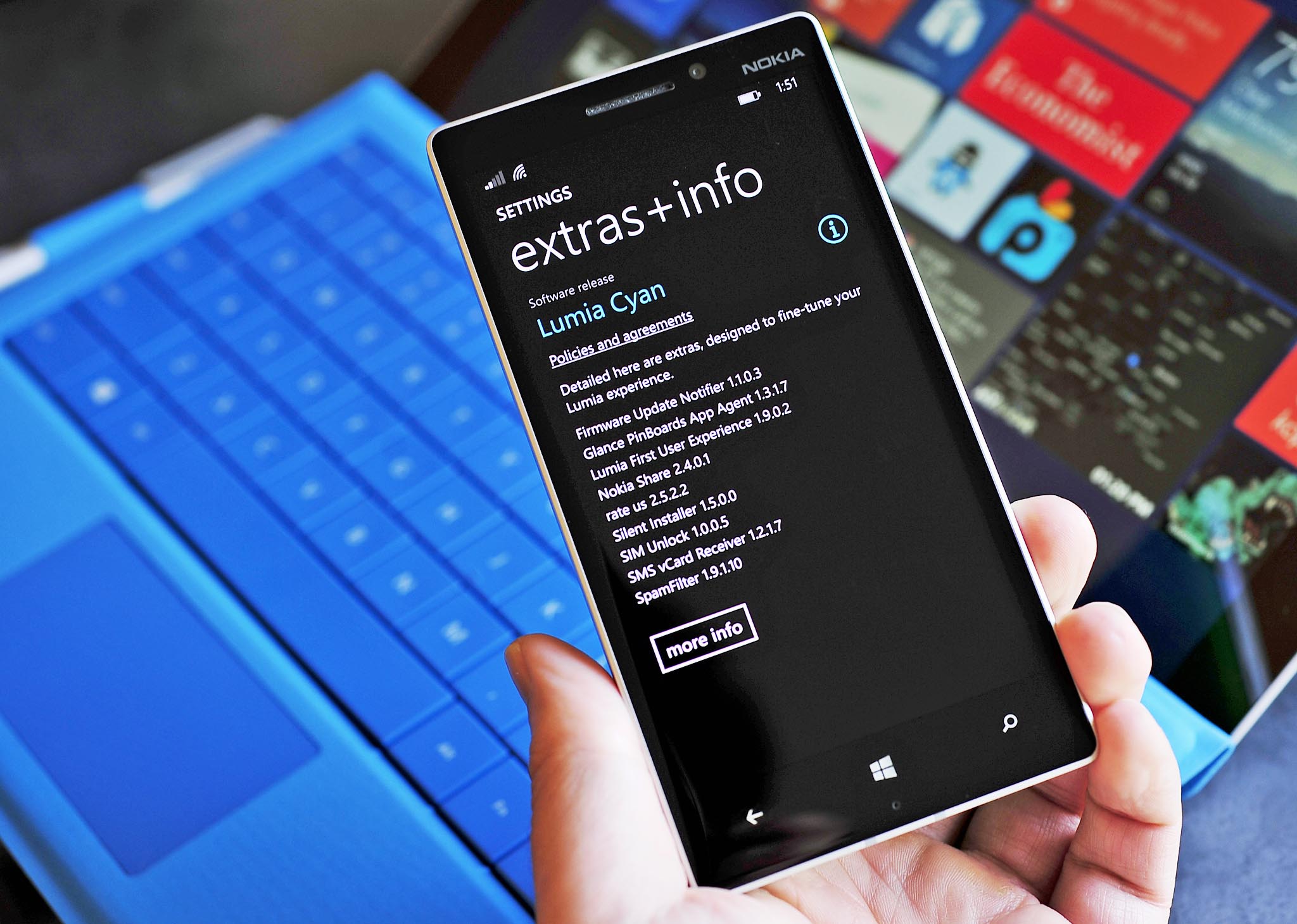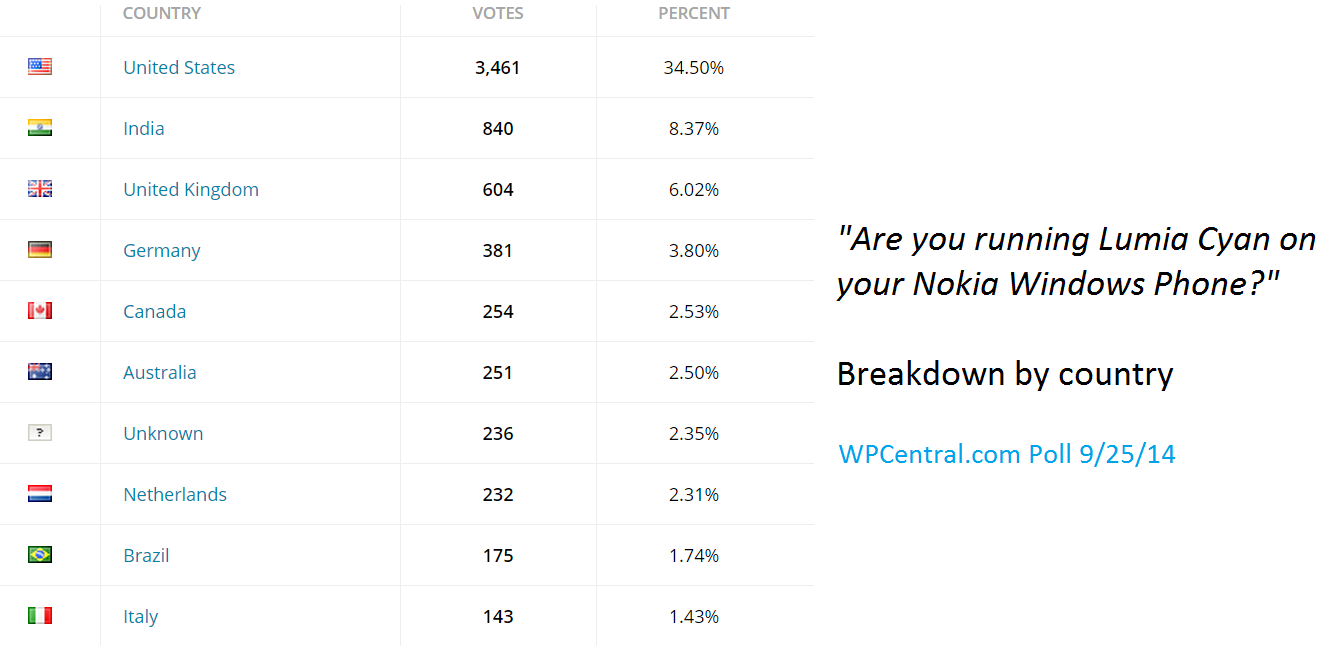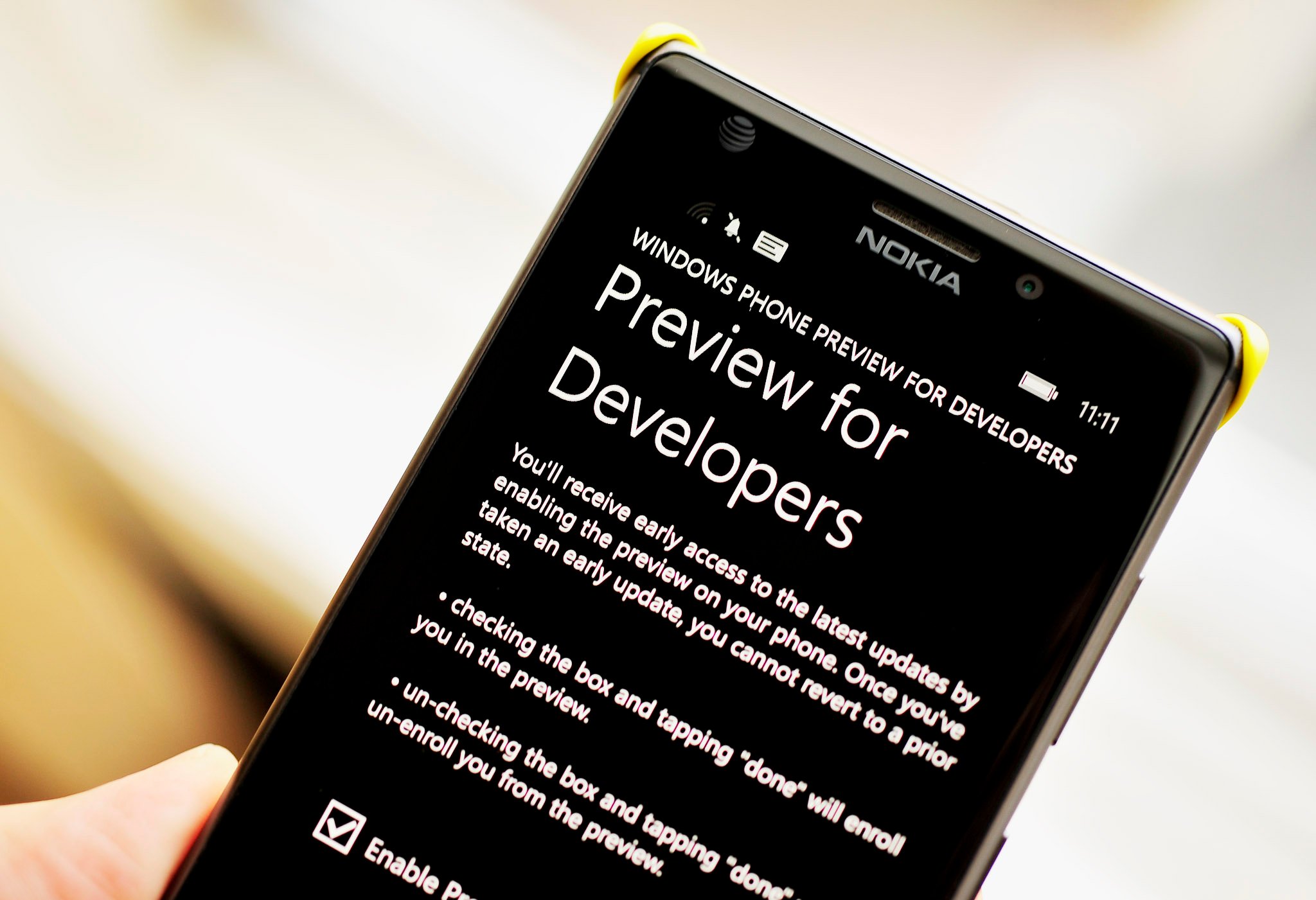Sixty percent of Lumia users now have Lumia Cyan and 8.1 updates for Windows Phone

80% of India respondents are on Cyan, while only 47% of those in the US can say the same
Microsoft had a big day yesterday, finally releasing a new preview version of their 8.1.1 Windows Phone operating system. The update is only for those using the popular Preview for Developers early-access program. Besides improving performance and fixing bugs, the update also unblocked the awaiting Lumia Cyan firmware for many more users, though not all. The question we were curious about is exactly how many of you are now on Lumia Cyan.
After ten thousand votes casts, we now have a definitive, if not surprising, answer.
Method
Yesterday's poll, which ran slightly less than 24-hours, collected 10,039 votes by the time this article went to press. Repeat votes are blocked by IP address matching or cookie, and an analysis of the IP logs confirmed this result. The poll was available on the web through either a PC or mobile browser.

Results
As of today, 60.57% of those with a Lumia Windows Phone are on Windows Phone 8.1 and the Lumia Cyan update. The other 39.43% of respondents are still waiting either for the block to lift or for their carrier to approve the update.
Analysis
Is the 60% number good or bad? Assuming all of those voting were actual Lumia owners and were truthful we can put the results into context.
Microsoft began pushing the Lumia Cyan update on a provisional basis back on June 25 for the Lumia 925 in Finland. However, the official kickoff was not announced until later on July 15, when the update began to be pushed out globally. In the weeks following, the update started to trickle out to other Lumia models and regions around the globe, often coming in waves.

AT&T in the US released Lumia Cyan on July 24 on their latest phone, the Lumia 1520. Other AT&T Lumias in their portfolio were updated roughly every couple of weeks. AT&T now has Lumia Cyan on all of their Windows Phones, including the Lumia 520, Lumia 820, Lumia 920, Lumia 925, Lumia 1020, and Lumia 1520. Verizon and T-Mobile, however, have not yet initiated any updates for Lumia Cyan, leaving customers empty handed. Although there are a few other carriers around the globe who have yet to roll out an update, T-Mobile and Verizon are certainly the most high profile laggards.
Get the Windows Central Newsletter
All the latest news, reviews, and guides for Windows and Xbox diehards.

Considering US voters accounted for 34% of poll respondents, their inability to update to Cyan is clearly skewing our poll numbers lower. For those in the US, 52.69% responded with 'no' to the Lumia Cyan question while 47.31%, presumably all AT&T users, said 'yes'. By comparison, 64.25% of those in the UK answered 'yes' to the question as did a hefty 80% of users in India.
Going by the July 15 date, Microsoft has reached 60% of Lumia devices with the 8.1 and Cyan update in just over two months. On the face of it, this is not a terrible number especially when compared to phones running the Android OS.

BitLocker and blocks
A mitigating factor, of course, is the 'BitLocker problem', which originated with some users of the Preview for Developers program bricking their phones when installing the Lumia Cyan update. This issue was caught on July 16, less than 24-hours after the announcement for Cyan. Microsoft immediately "paused" the update until a fix was in place.
Once again, AT&T was the first with a fix for their Lumia 1520 and Lumia 1020 at the end of August, although most users globally did not see it until yesterday. (Users could roll back the phone OS and take the full update to 8.1, but this process involved wiping the device and is a bit more technical).
While we cannot reliably factor out the BitLocker-issue from the Lumia Cyan updates, it is safe to say that had it not occurred our poll number would be higher. Likewise, if US carriers were faster to release updates to consumers.
Considering Microsoft had a blanket hold on Cyan for all Preview users for over 60 days that 60% number begins to look more confident.
When it comes to over-the-air updates, Apple and the iPhone have the most coveted deal whereby they can give little notice to carriers who can rarely block an update. This ability results in universal adoption rates of an OS update within days, as opposed to months. However, as yesterday's iOS 8.0.1 fiasco has demonstrated, even Apple can run into problems. That 8.0.1 updates were supposed to fix some minor bugs but instead it killed the phone's cellular radio and Touch ID fingerprint reader, frustrating users.
Microsoft evidently sits in the middle when it comes to delivering OS updates falling between iOS and Android. Whereas iOS can update in days, for Windows Phone it can span roughly three months for all devices.

Timing & Awareness
The larger problem for Microsoft is the perception of Windows Phone fans, because although Lumia Cyan updates did not begin until July 15, it was announced nearly three months earlier back in April during Build 2014. This gap between announcing and getting it on to customer phones, which for some users is nearly six months, is significantly longer, and it has no doubt contributed to the user resentment.
In the future, Microsoft may be better served by announcing new firmware releases closer to their actual ship dates, instead of four or more months out.
Are you surprised by the poll results – why or why not? Let us know below in comments.

Daniel Rubino is the Editor-in-chief of Windows Central. He is also the head reviewer, podcast co-host, and analyst. He has been covering Microsoft since 2007 when this site was called WMExperts (and later Windows Phone Central). His interests include Windows, laptops, next-gen computing, and wearable tech. He has reviewed laptops for over 10 years and is particularly fond of 2-in-1 convertibles, Arm64 processors, new form factors, and thin-and-light PCs. Before all this tech stuff, he worked on a Ph.D. in linguistics, performed polysomnographs in NYC, and was a motion-picture operator for 17 years.
